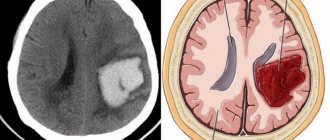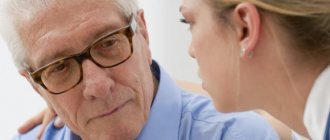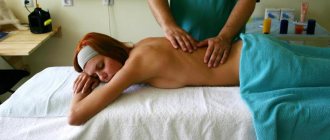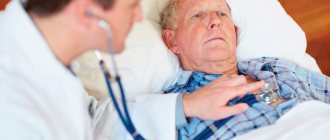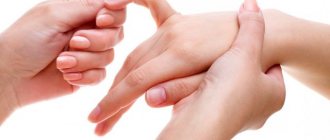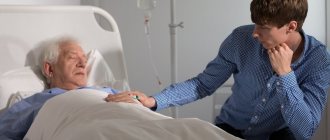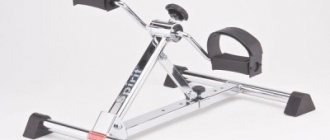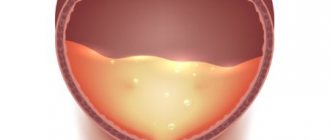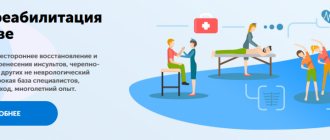Stroke in medical practice is defined as an acute or transient disorder of cerebral circulation, which results in destruction of cerebral structures (necrosis). The result of this terrible condition is often temporary impairment of cognitive functions. In particular, the ability to memorize new information and reproduce already received information suffers, that is, memory loss after a stroke. This is often a temporary phenomenon that is transient in nature, but it takes work to restore normal brain functions. What do you need to know about measures to restore the ability to remember?
Briefly about memory as a cognitive function
Memory as a cognitive function consists of two components. First of all, from the ability to memorize new things, and secondly, from the reproduction of already known data and phenomena in the consciousness of the subject. This ability is not localized in any one part of the brain, but consists of creating new neural connections and activating old ones.
As a result of a violation of the cerebral blood supply, the connections that have already been created are destroyed, the person forgets what he remembered before, new connections are created slowly, and the result is a violation of the two processes mentioned above.
In the structure of the ability to reproduce information, there are three types:
- Long-term memory. Its task is to store data for an unlimited period of time.
- Operational type. It consists of storing information for 2 minutes – 24 hours. Necessary for completing immediate tasks.
- Short term type. Data is stored for several seconds (up to several minutes). Moreover, if you do not record the information received, forgetting occurs.
Memory loss during a stroke is expressed in several possible ways:
- False memories. The so-called paramnesia.
- Amnesia. Total memory loss.
- Hypermnesia. This is an enhancement of cognitive function. It is extremely rare.
- Hypomnesia. Weakening of cognitive function. Memorizing and reproducing data is difficult.
The way in which the loss of this brain capacity is expressed varies greatly. The patient may forget the faces of relatives, their names, names of household items, his own name, etc. The processes of forgetting and remembering may be disrupted.
How to restore memory after a stroke?
A variety of brain rewiring techniques are designed to improve thinking and memory after a stroke. Training can help improve alertness and attention, but there is no scientific evidence that such therapy can improve the ability to perform everyday tasks. Such training can be completed independently, under the supervision of a specialist, using computer programs and applications. To stimulate your brain and improve your memory and cognitive abilities, you should try your hand at new hobbies that involve both your mind and body. In addition, it is necessary to exercise regularly: adequate physical training benefits both physical and mental health.
Stimulate your brain
Games that require active use of brain resources, be it simple checkers or complex games like chess, can help restore memory function. Establish mandatory daily routines, such as reading a book, doing crosswords, doing puzzles. Set exactly when you will complete these tasks. Do them every day in a certain sequence.
Work with rehabilitation specialists
Speech therapy promotes recovery. Speech therapy helps stimulate the brain to create neural connections from the undamaged parts of the brain to the areas affected by the stroke.
Find determination to get well
Confidence in recovery always works in a person's favor. Approach your studies with purpose, responsibility and inspiration.
Post reminders for yourself
Leave notes in key areas, such as signs in the bathroom reminding you to brush your teeth. Use your smartphone's alarm to remind you of your appointments and when to take your medications. Once you form a consistent and repeatable routine, the habit will help restore memory.
Record daily and special events in a planner. Keep a notepad with important information handy at all times. Organize information into sections such as appointments, phone numbers, and medications.
Create written instructions on how to use common household items such as phones and microwaves. If writing is difficult, you can use a voice recorder or a smartphone app to take notes. You can also ask other people to write things down for you.
Use associations
Mnemonics are a creative way of remembering things. It often takes the form of an acronym. For example, memorizing the word “HAIR”, made up of the first letters: elevation, restriction, ice, rest, compression, is a quick way to remember how to treat a sprain. You can come up with your own abbreviation for the steps to prepare a familiar meal.
Rhymes that associate the names of objects with their properties also work well. For example: “Anna has curly hair.” Use cues to help you remember specific tasks or information. To create a memory cue, connect the task or piece of information to something meaningful, such as a picture, a familiar name, or a song.
Get Organized
Making it easier to find items needed for daily activities by placing them in a visible place will help you remember what to do and when. Give everything a place. For example, hang your keys on a hook by the door. Put personal items on the shelves in the closet where they belong. Prepare clothes to wear in the morning before going to bed at night. Place your toothbrush on the sink where you can see it. Labels on cabinets and drawers will help you know where certain items are. These do not have to be written labels; pictures can be used instead.
Repeat and rehearse
When you receive new information, repeat it several times. Review the material as many times as necessary for it to “download” into memory. Don't be afraid to say what you've been told in your own words to make sure you understand the other person's message correctly.
If you need to give a presentation or speech, break the material into smaller segments. This will make it easier to remember the text. Keep it simple. Try not to do too many things at once. Break down tasks into simple steps.
Stay active
Get out of bed and move as much as possible. Take an hour-long walk in the fresh air every day. Visit exercise therapy rooms. Even aerobic exercise done at home can help restore brain function after a stroke. Exercise helps relieve stress, and coping with stress is important for brain health.
Feed your brain the right foods
According to the American Stroke Association, a brain-healthy diet includes plenty of fresh fruits and vegetables and fish rich in omega-3 fatty acids. Such nutrition will help to achieve a speedy restoration of cognitive potential. A healthy diet and small portions will help you lose weight and achieve better physical well-being. In turn, the well-being of the body will have a positive effect on the mental state and will increase the speed of mental recovery.
Recovery time
In most cases, there is temporary memory loss. Recovery time depends on several factors: age, extent of damage to brain structures, gender of the patient (the fairer sex recovers faster), age (young people recover faster). Much also depends on the quality and completeness of rehabilitation methods. A comprehensive approach is required using both medications and exercises (training).
Basic principles of restoration activities
Recovery will be effective only if the doctor and the patient himself, as well as his relatives, adhere to a number of simple principles:
- What is required, as already mentioned, is a systematic approach to the rehabilitation of the patient. It is necessary to use specialized medications, also select the right set of training and regularly perform it together with the victim.
- A step-by-step restoration of cognitive functions is necessary. No one can predict in advance what the rehabilitation period will be in a particular case. You need to be patient and systematically perform sets of exercises, starting with simple tasks and moving on to more complex ones. Starting abruptly with something difficult can tire a person. The result will be a worsening of the condition and a “rollback” back.
- It is important that the patient constantly feels supported by loved ones. The emotional background plays a huge role in rehabilitation and increases its speed.
Only by adhering to these rules can you achieve success in therapy.
Folk recipes
You can speed up the recovery process at home using folk remedies. There are the following recipes for this:
- Grind 2 lemons and 2 oranges with peel, add a couple of tablespoons of honey and leave to steep for a day. After this, put it in the refrigerator. Drink 1-2 tablespoons three times a day. You can also drink a small spoon of lemon juice every morning, after mixing it with sugar and a clove of garlic.
- Add 0.5 liters of hawthorn tincture to 300 g of walnut partitions and leave to infuse for a couple of weeks. Take a teaspoon three times a day. It is better to do this before eating. The course of use of this product is 3 weeks.
- Effective folk remedies include the following infusion: add a glass of water to 1 dessert spoon, leave for a couple of hours and take a couple of tablespoons three times a day. It is recommended to do this for 3 weeks. After a break of 10 days, it is recommended to continue the course of use of the product.
- To prepare the decoction, you need to chop a tablespoon of rowan branches and bark, add 1 glass of water and cook for 10 minutes. Then leave for a couple of hours and mix with water to obtain the original volume. Take a third of a glass per day. The course of therapy is 3 weeks.
- You can also prepare an infusion of half a glass of dried sage herb. It needs to be filled with 250 ml of boiling water and left to infuse for 8 hours. Take a small spoon three times a day with milk.
- To stimulate the restoration of damaged tissue and reduce cholesterol, it is recommended to use folk remedies such as pollen. It should be taken a small spoon three times a day. It is better to do this on an empty stomach.
- To restore cells damaged after a stroke and get rid of blood clots, treatment with folk remedies such as mumiyo and aloe juice is suitable. To prepare a healing composition, it is recommended to mix 5 g of mumiyo with 150 ml of juice.
Rehabilitation methods for cognitive impairment
Memory restoration after a stroke, as already noted, involves two main directions: the use of drugs and training to improve memory.
Medicines
Medicines to improve memory and cerebral circulation help normalize neuronal metabolism, normalize and accelerate recovery processes. We are talking about the following pharmaceuticals:
- Actovegin. A kind of “panacea” for all types of brain disorders. It is recommended to use it in the form of intramuscular injections, so the effect will be maximum. Normalizes the condition of nerve tissue, accelerates cell healing and the creation of new neural connections. The drug is especially effective when the patient’s cerebral structures were in a prolonged state of oxygen starvation.
- Piracetam. Increases memory, eliminates temporary loss of ability to remember and reproduce information.
- Glycine. A cheap but effective remedy that activates the work of cerebral structures.
Contrary to many recommendations on the Internet, effective folk remedies simply do not exist, and it is not recommended to waste time on them.
If there are no contraindications, biologically active food supplements can be used. They are prescribed temporarily, like drugs, but are used for a longer period of time compared to medications. Suitable, for example, are Huato Boluses. This supplement has proven itself well.
Exercises
The following recovery methods are most effective:
- Memorizing poetry. It is recommended to take simple nursery rhymes and learn a line every day in the initial period. No more. Forcing the process will have the opposite effect. In this case, it is necessary to accompany each line with movements of the hands and fingers. The patient must also memorize passes with the limbs. This exercise has a double effect on the patient’s brain functions: firstly, memorizing the quatrains itself makes it possible to train the memory, and hand passes allow you to create new stable neural connections. Cerebral structures learn to work again.
- It is necessary to write by hand every day. Scientists have proven that hand motor skills are directly related to the processes of memory, thinking and speech. This is good for restoring cognitive functions.
- It is recommended to remember pleasant events and lives of the patient and his loved ones.
- Recreate images in your mind. The patient must remember as many details as possible about a particular object or person. It is required to visualize it, etc. This helps improve memory and its gradual recovery.
- You can also train your memory by coming up with the names of objects, remembering the names of vegetables, fruits, household objects, etc.
- You need to read as much as possible. Texts must be written in large letters.
- You should not remember unpleasant moments from life, moments associated with illness, with a person’s work.
- It is necessary to regularly ask the patient about the weather and his condition in order to restore other cognitive functions through thinking.
- It is necessary for the patient to remember moments from his life.
There's no need to rush. Everything should happen naturally and non-violently. Memory restoration is a long and complex process. Only by showing maximum patience can the cognitive abilities of the affected person be normalized. This must be done gradually, carefully and without violence against the individual.
What is memory loss after a stroke?
The patient may encounter the following types of disorders of mnestic function in the following aspects:
- Verbal – memory for names, heard stories and information related to speech activity.
- Visual – memory of shapes, faces, routes and things seen
- Informational – memory for learned information, previously existing skills, problems in acquiring new knowledge.
- Vascular dementia is a common post-stroke condition involving deterioration or loss of thinking abilities.
Symptoms of memory loss after a stroke may include:
- confusion in the interpretation, analysis, systematization of received signals and their comparison with previously acquired information;
- problems with short-term memory;
- tendency to wander or the possibility of getting lost in familiar places, disorientation in space;
- difficulty following the instructions received;
- problems with making money transactions.
Memory loss can be a direct result of a stroke, but can also be caused or worsened by medications, alcohol, tobacco and drug use, lack of sleep, depression and stress, and poor nutrition.
Memory can improve over time, both spontaneously and as a result of rehabilitation. However, sometimes symptoms of mnestic disorders can be observed for years. For memory loss, medications used to treat related problems such as anxiety, depression, or sleep disorders may be helpful.
